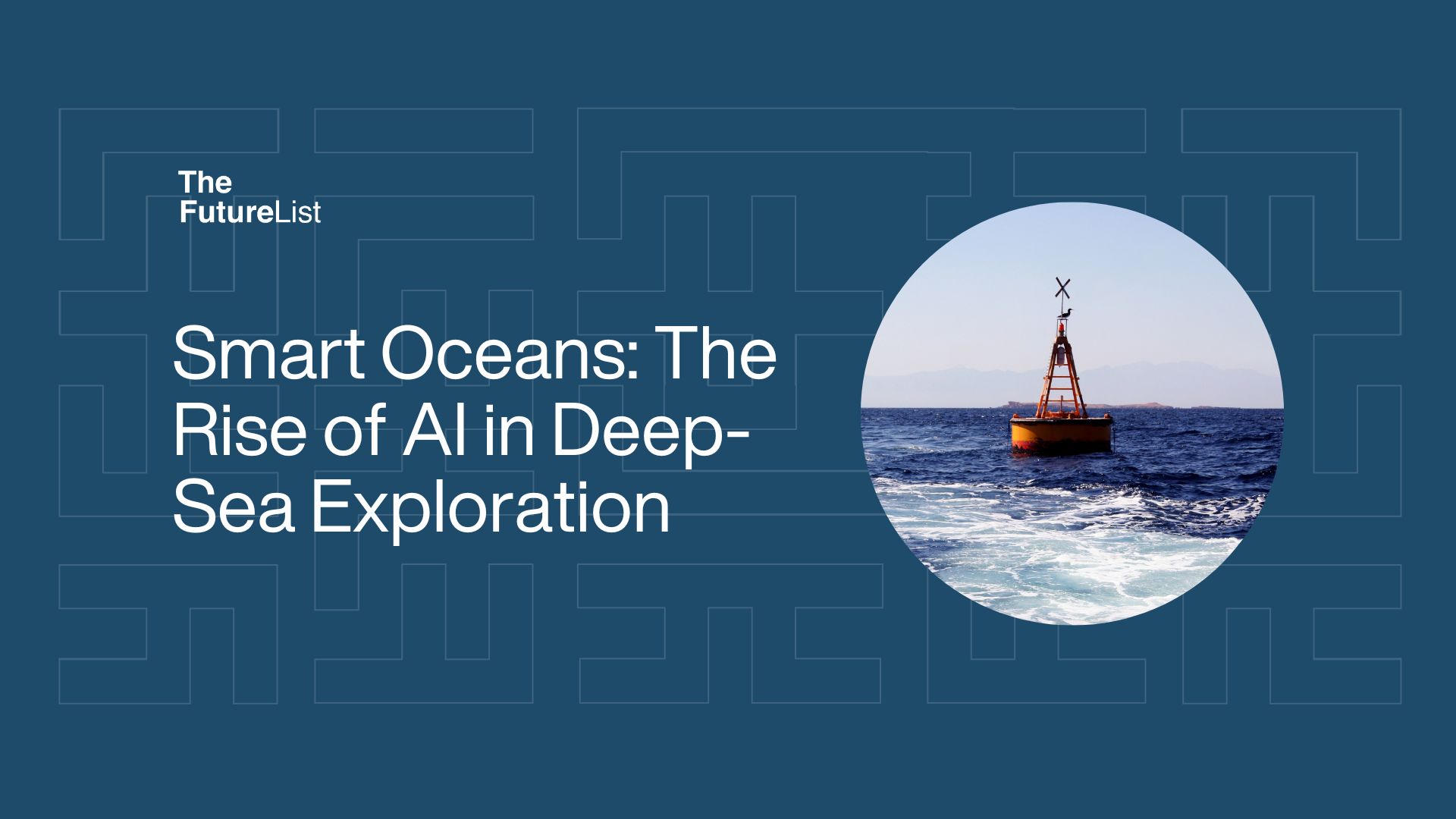
Smart Oceans: The Rise of AI in Deep-Sea Exploration
Vast portions of the ocean remain uncharted, and secrets lie under its depths, making it one of the least explored frontiers on Earth. Deep-sea exploration using traditional methods is expensive, time-consuming, and frequently constrained by human capabilities. The study of the ocean is being revolutionized by artificial intelligence (AI), which makes it possible to scan the seafloor more effectively, accurately, and independently. This technology reveals new information about marine ecosystems, underwater geology, and possible resources. Examples include AI-powered underwater drones and machine-learning algorithms that examine enormous volumes of sonar data. As it develops, AI is transforming ocean exploration and opening up the deep sea to more people than ever.
In addition to improving data collection, AI-driven technologies are also making it easier to analyze complicated underwater surroundings. Without human assistance, AI-enabled autonomous underwater vehicles (AUVs) can recognize geological characteristics, navigate hazardous environments, and even spot indications of aquatic life. Rapid processing of large datasets by machine learning algorithms reveals features and patterns that could otherwise go overlooked.
Startups Using AI to Revolutionize Ocean Exploration and Deep-Sea Mapping
Albatross Technology is a Japanese company led by Hiromichi AKIMOTO that focuses on advancing renewable energy technologies derived from ocean resources. Its work includes the development of floating offshore wind turbines, marine current turbines, and wave energy converters, all designed to enhance the efficiency of ocean energy. By optimizing these technologies, the organization aims to contribute to reducing carbon emissions and supporting the transition to a more sustainable energy future.
Founded by Yi Chao, Seatrec is a U.S.-based company that develops energy harvesting systems that convert natural temperature differences in ocean waters into electricity. This technology provides a sustainable power source for deep-sea research equipment, including floats, gliders, and autonomous underwater vehicles (AUVs). By enabling continuous, cost-effective data collection in deep ocean environments, these systems enhance the scalability and efficiency of marine exploration and monitoring.
HydrokinetX is a US-based company founded by John W. Tauriac that utilizes kinetic underwater energy to power an advanced ocean monitoring platform, enabling continuous data collection and real-time transmission. By integrating renewable marine energy with edge computing, the system supports long-term, autonomous ocean observation, advancing research, environmental monitoring, and maritime operations. This approach enhances data accessibility and enables new capabilities for understanding and managing ocean environments.
Get innovation insights from The FutureList weekly. Subscribe to our newsletter here
Categories
- Agritech
- Artificial Intelligence
- Biotech
- Blockchain
- Climate Tech
- Data Infrastructure
- Edtech
- Events
- Fashion
- Fintech
- Healthtech
- Infrastructure
- Innovation Memos
- Innovation Scout Program
- Insight
- Insurtech
- Machine Learning
- Martech
- Mobility
- Music and Media
- Partner Offers
- Perks
- Procurement
- Proptech
- Retailtech
- Ridehailing
- Ridesharing
- Robotics
- Space Aviation
- Supply Chain
- Talent
- Telecoms
- Uncategorized
- Venture Capital
- Wastetech
- Women In Tech
Recent Posts
- The Formula for Future Speed: Data-Driven Performance in Racing
- Leveraging Next-Gen Endoscopic Interventions and Innovations for Healthcare
- Inside the Quiet Work of Operationalizing AI Ethics in Government
- The Evolution and Impact of DNA Cloning Technology
- The Infrastructure Layer for Ethical Supply Chains